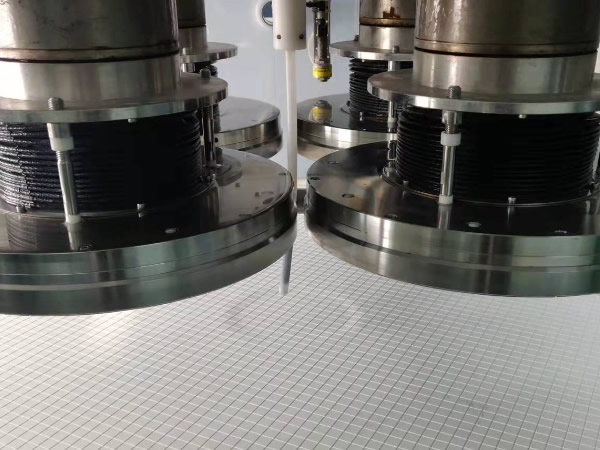
Introduction: In previous articles, we introduced you to cerium oxide polishing fluid and magnetorheological polishing fluid. Today's article, Zhuo Jingyi takes you to an overall understanding of the only chemical mechanical polishing fluid that can provide overall planarization for surface finishing.
The competition for national strength in the 21st century ultimately boils down to the competition for advanced manufacturing capabilities. In today's information age, it mainly manifests as the competition for advanced manufacturing capabilities in the electronics industry.
At present, the rapid development direction of the advanced manufacturing industry of electronic products is high precision, high performance, high integration, and reliability. Therefore, unprecedented high requirements have been put forward for the local and overall flatness of the machined workpiece surface (requiring sub nanometer level surface roughness). Internationally, it is generally believed that the feature size of the processed workpiece is within 0.35 μ When m is below, global flattening must be performed.
Pure chemical polishing has high corrosiveness, high polishing rate, low damage, and high surface finish, but the surface smoothness and consistency after polishing are poor; Pure mechanical polishing has high surface flatness and consistency, but with significant surface damage and low smoothness. Chemical mechanical polishing can be said to combine the comprehensive advantages of chemical polishing and mechanical polishing.
Chemical mechanical polishing, without affecting the polishing rate, can achieve a high surface finish and improve surface flatness, making it the only surface finishing technology that can provide overall planarization to date.
At present, the commonly used polishing fluids at home and abroad include silica gel polishing fluid, Cerium(IV) oxide polishing fluid, alumina polishing fluid, nano diamond polishing fluid, etc.
Let's take a look separately:
1. Silicon dioxide colloid polishing solution
Silicon dioxide colloidal polishing solution is a high-purity metal ion type polishing product produced through a special process using high-purity silicon powder as raw material. Widely used for high flatness polishing of various nanomaterials, such as silicon wafers, compound crystals, precision optical devices, gemstones, etc. Due to the fine particle size of silica, it is approximately 0.01-0.1 μ m. Therefore, the damage layer on the surface of the polished workpiece is extremely small; In addition, the hardness of silicon dioxide is similar to that of silicon wafers, so it is commonly used for polishing semiconductor silicon wafers. Silicon dioxide is an important component of polishing fluid, and its particle size, density, dispersion, and other factors directly affect the rate and quality of chemical mechanical polishing. Therefore, the preparation of silica colloids is also an indispensable process in polishing fluids.
2. Cerium oxide polishing solution
Cerium(IV) oxide is a general grinding material for glass polishing. As the size of the workpiece decreases, traditional silicon is prone to forming butterfly shaped defects at larger integrated circuit STIs (shallow channel isolation). For the polishing of STI, the key is to select a suitable polishing solution. The second generation polishing solution that uses cerium oxide as the grinding particle has the characteristics of high selectivity and automatic stop of the polishing end point. In combination with rough polishing and fine polishing, the particle size of Cerium(IV) oxide in the polishing solution is one of the key parameters that affect the polishing effect. At present, the particle size of the prepared Cerium(IV) oxide is mostly micron or submicron, the particle size distribution is uneven, and the solution with large particle size produces scratches, which seriously affects the polishing quality of the polished workpiece. Therefore, the preparation and application of nanometer Cerium(IV) oxide is one of the hot spots of current research, which can effectively solve the shortcomings of the first generation STI process, and is one of the key product types to be developed at present.
3. Alumina polishing solution
Aluminum oxide (alumina) has high hardness and good stability. Nano alumina is widely used for precision polishing of optical lenses, single core fiber connectors, microcrystalline glass substrates, crystal surfaces, and other aspects. It is a widely used inorganic abrasive. The semiconductor lighting technology centered on high brightness gallium nitride based blue LEDs has brought a great impact on the lighting field and has become a hot research topic in the global semiconductor field. However, due to the difficulty in preparing gallium nitride, thin films must be epitaxial grown on other substrate materials. There are various substrate materials for gallium nitride. Currently, both blue and white LED chips use sapphire or silicon carbide wafers as substrates. Therefore, wafer polishing has become a focus of attention. In recent years, a new process has been adopted internationally, which involves using alumina polishing solution to complete the grinding and polishing of sapphire wafers in one go, greatly improving the polishing efficiency of sapphire and silicon carbide wafers.




